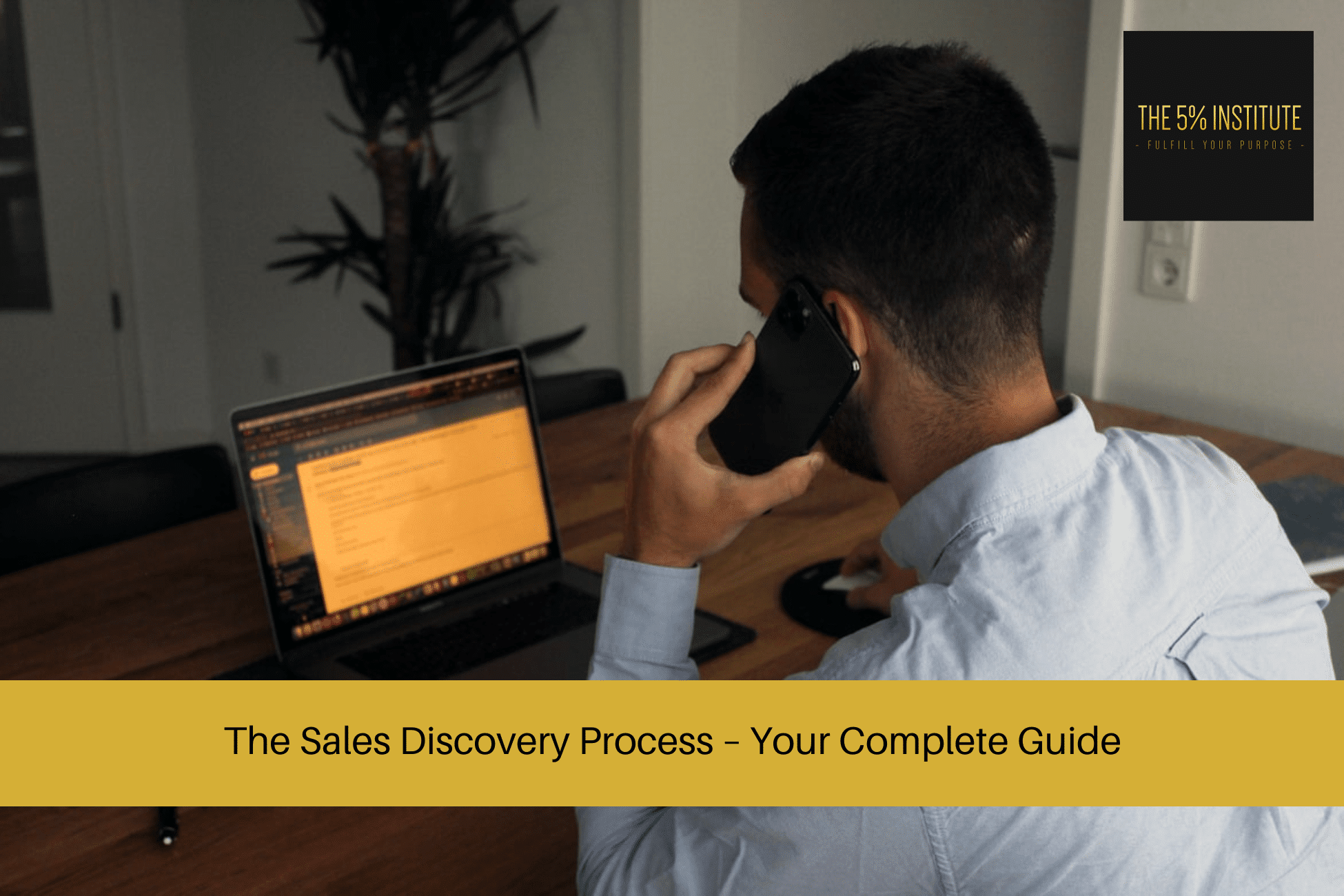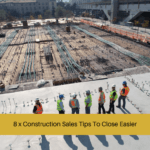
The Sales Discovery Process – Your Complete Guide
The sales discovery process is one of the most important parts of the sales process framework, because it can be the difference between starting a new relationship with a client or revisiting the process for a new potential client.
But what is a sales discovery process?
And what should you do during the sales discovery process to ensure you succeed?
In this article, you’ll learn:
- The definition of a sales discovery process
- What you should do prior to the sales discovery process
- All our prescribed steps to close more sales
The Sales Discovery Process – Your Complete Guide
What Is A Sales Discovery Process?
A sales discovery process is an initial phone call you have with your potential client, to see whether or not they’ll be the right fit for you, and whether or not you could in fact serve them with their needs.
A sales discovery process is exactly that – you want to discover and uncover if they’re qualified to buy your product or service, and what level of desire they have to reach their ideal outcomes.
The sales discovery process can take anywhere between 15 minutes to an hour – depending on what it is that you’re selling, and whether they are in fact qualified or not to invest in your product or service.
What Should You Do Prior To The Sales Discovery Process?
Prior to your sales discovery process, there are two areas you should focus on to ensure that you’re efficient with your time, and secondly – that you can create a positive experience for your potential client.
Prior Tip #1 – Do Some Homework
Prior to your sales discovery process, you should always do some homework and investigating on your potential client.
There are a few things we usually do, and also recommend that you do so too.
First of all, we always look for them on LinkedIn.
Find out what their current role is, how long they’ve been in their role, and what their experience is.
You can also see what other people have ‘endorsed’ them for which will give you an idea of their potential strengths.
If you can’t find them on LinkedIn, we recommend looking for them on social media such as Facebook and Instagram.
We also recommend doing a Google Search on them too, and seeing what you can find interest wise, as well as anything else that may be useful.
Just to be clear – we aren’t advocating to become a stalker of any kind!
We just want to ensure you get a rough idea prior to the sales discovery process, so you can build rapport, and get an idea of who you’re speaking with.
Prior Tip #2 – Plan Your Sales Discovery Process
Prior to jumping onto your sales discovery process, we also recommend planning what it will look like, what you will say, and what you will ask.
As Benjamin Franklin once famously said, “If you fail to plan, you are planning to fail”.
It is important to ensure you’re aware of how the call will go, so you’re not winging it and positioning yourself as someone unprofessional.
To help you plan your sales discovery process, we’ve outlined a step by step process we recommend you use, so you can consistently close more clients, and serve more people.
Further reading: The Strategy Session – Your Ultimate Guide
The Sales Discovery Process – Step By Step
The most important ingredient you can add to your sales discovery process, as well as your overall sales game – is the inclusion of a sales process.
A sales process, also known as a sales structure; is the step by step system you use to guide your potential client on a journey, and help you close more sales.
Although there are various types of sales methodologies out there; we recommend using one which helps guide the potential client to sell themselves.
This way – it’s easier to sell your product or service, versus using some old-school and outdated system that recommends you do the hard sell.
Below are some key steps and tips we recommend using in your sales discovery process.
Related article: The Sales Process – A Step By Step Guide
Step 1 – Build Rapport
The first step prior to diving deep into your sales discovery process, is building rapport with your potential clients.
People buy from people they like and trust – and people that are also like them.
Start by building some quick rapport; some topics you may want to quickly talk about to build familiarity, may be intelligence you found in your prior homework phase.
Related article: A Guide To Building Sales Relationships/ Building Rapport
Step 2 – Pre-Frame
Any sales conversation; including a sales discovery process, is fit into something we call a frame.
A frame is how you will frame the overall conversation; which if you play your cards right, will be framed that they need your product or service – and should buy.
Prior to the frame – we recommend doing something called a pre-frame.
A pre-frame’s job is to do the following things:
- Find out if all decision makers are present
- Let them know that you’ll be asking a lot of deep diving questions
- That’s if they don’t feel that you’re the right fit – that it’s completely OK, and to let you know
To learn how to do this in more detail, read the article below.
Further reading: How To Overcome The Two Main Sales Objections In Two Minutes
Step 3 – Set Call Expectations
Once you’ve set your pre-frame, it’s important to let them know how the sales discovery process will generally go.
This comprises of you letting them know how long it will take, as well as the types of questions you’ll be asking and why.
By why – I don’t mean you telling them that you’re investigating whether or not they’re qualified, but instead; letting them know you want to ensure you can in fact help them, and that you’ll only offer your product or service if you feel you truly can.
This will separate you from a lot of other people out there who position themselves to make a quick dollar.
On the topic – it is always important to leave your presenting to the end, and only present if you know you can in fact serve your potential client.
Step 4 – Qualify
A lot of Sales Professionals make the mistake in their sales discovery process, by speaking with people who they shouldn’t be speaking with in the first place.
These people are not qualified for your sales discovery process or offer; and it’s imperative to pick up on this as soon as possible.
As per our article here, we’ve written a list of sales probing questions to help you qualify your potential clients:
- Prior to moving forward, is there anyone else who may need to be involved?
- Out of curiosity; what budget did you have put aside for this?
- What timeline did you look at having these issues resolved?
- What do you think our next steps should be?
Another popular sales qualifying acronym is something called the BANT method. To learn more about how use BANT, read the article below.
Further reading: BANT In Sales – How Does It Work?
Step 5 – Find Pain
The third and very important step in your sales discovery process, is finding why they’re looking at making a purchasing decision in the first place.
People don’t buy things – they buy what it will mean when they own it.
Generally – this means they currently are in a situation they’re not happy with and are aspiring to make a purchasing decision to get to where they want or need to be.
People buy to escape pain and move towards pleasure.
To learn how to uncover pain in your sales discovery process, read the related article below.
Further reading: Pain Points & Sales – Your Ultimate Guide
Step 6 – Demonstrate How To Solve Their Pain
Once you have found their pain and learnt the meaning behind what it means to have those pain points; you need to demonstrate that you can solve their problems with your product or services.
There is an effective way at doing this, which handles objections and much more.
As this is quite a concise topic, we’ve dedicated an article to teach you how you can do this too.
Related article: 10 x Effective Sales Presentation Tips You Need To Use
Step 7 – Ask For The Sale
You’d be surprised how many Sales Professionals fail to ask for the sale in their sales discovery process.
Many do it because they’re nervous about getting a no – and that they don’t know what to do after they feel rejected by the potential client.
If you’re feeling this way, it means you’re not using a step by step, sure-fire way to consistently close clients.
And yes – this is costing you income.
Ask for the sale confidently, but prior to doing so; ensure you follow the step by step structure outlined in this article.
By following our sales process, you’ll have a better and more consistent chance of closing more sales and serving more people.
Related article: 5 x Closing Questions To Win More Sales
The Sales Discovery Process – Final Thoughts
The sales discovery process is an excellent conversational tool when used correctly, because it can allow you to qualify your potential clients early, learn about their pain points, and find out whether you can in fact serve them with your product or service.
Whether you’re in consulting, coaching, small business and much more – a sales discovery process can be beneficial for you.
If you’d like to master the sales process so you can be a lot more consistent in your sales discovery process, we recommend you check out The 5% Sales Blueprint by clicking the link here.
Want To Close Sales Easier?
Are you committed to closing sales a lot easier, and consistently?
If so, you should check out our self-paced and affordable online sales training program; The 5% Sales Blueprint.
It’ll give you everything you need to close sales consistently.
To learn more, simply click on the link below for more information.
Our Online Sales Training Program – The 5% Sales Blueprint.



